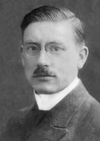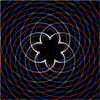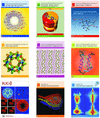issue contents
November 2016 issue

Cover illustration: 100 years of the Debye scattering equation (DSE) are celebrated in this issue with a collection of papers arising from the DSE2015 conference [Scardi et al. (2016). Acta Cryst. A72, 589-590]. The DSE may be used to compute the scattering from samples that are not periodically long-range ordered, such as the one shown in the background, which is the result of a molecular-dynamics simulation of aggregated iron nanocrystals after extensive plastic deformation [Gelisio & Scardi (2016). Acta Cryst. A72, 608-620; Rebuffi et al. (2016). Sci. Rep. 6, 20712].
editorial

100 years of the debye scattering equation
research papers
international union of crystallography



 journal menu
journal menu































